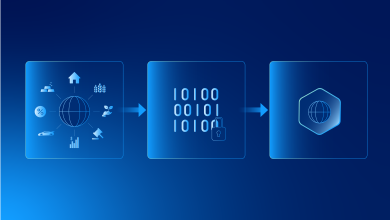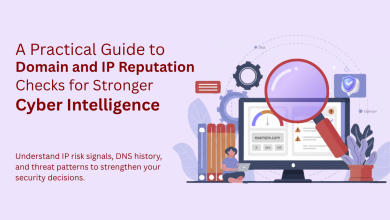Supply chains have grown increasingly complex. Consumers want to know where their products come from, how they were made, and what materials were used. Regulatory bodies demand proof of compliance with safety standards. Meanwhile, companies struggle to track products through multiple suppliers, manufacturers, and distributors.
Blockchain helps ensure transparency in packaging operations and offers a compelling solution to these challenges. This distributed ledger technology creates an immutable record of every transaction and movement in the supply chain, from raw material sourcing to final delivery. For packaging and business leaders, it helps build customer trust and meet regulations.
What Makes Blockchain Different for Packaging?
Blockchain operates on a simple but powerful principle: distributed verification. Instead of relying on a single authority to keep records, the technology spreads that responsibility across multiple network participants. Each new piece of information must be validated by consensus before it’s noted on the permanent record.
For packaging applications, this means every stakeholder—from farmers to manufacturers to retailers—can contribute verified data about their role in the supply chain. A coffee roaster can record the exact farm where the beans originated. A packaging facility can record which materials are used in containers. A shipping company can timestamp delivery confirmations.
The beauty lies in the interconnected nature of these records. No single party can manipulate data without detection. If a manufacturer tries to falsify sustainability claims or origin information, the blockchain reveals inconsistencies.
Breaking Down the Trust Barrier
Consumer trust has eroded over the past decade. Food scandals, greenwashing accusations, and supply chain disruptions have made shoppers skeptical of corporate claims. Traditional packaging provides limited reassurance beyond basic regulatory compliance.
Blockchain changes this dynamic by making verification accessible to everyone. Consumers can scan a package and access the complete history of their product. They can verify organic certifications, trace geographic origins, and confirm ethical sourcing practices through independently verified data.
Technology Implementation in Packaging Systems
Here’s how blockchain helps make packaging more transparent. It uses several connected parts, one of which is Internet of Things (IoT) sensors. They’re integrated into packaging machines and can record temperature, humidity, and location data throughout the supply chain. This information feeds directly into the blockchain, creating a comprehensive environmental history for sensitive products, like pharmaceuticals or fresh foods.
Modern roll stock packaging solutions can incorporate embedded sensors and unique identifiers that connect physical packages to their digital records. This integration allows manufacturers to track individual packages rather than just batch-level information.
QR codes, NFC chips, and RFID tags serve as bridges between physical packages and digital records. These technologies enable instant access to blockchain data through automated inventory systems.
Supply Chain Visibility Transformed
Blockchain creates what industry experts call “end-to-end traceability.” Every material input, processing step, and quality check gets recorded with timestamps and digital signatures. This comprehensive documentation serves multiple purposes.
Manufacturers can find contamination sources within hours. Recall processes become precise and targeted rather than broad and wasteful. Quality assurance teams can pinpoint exactly where problems occurred and implement corrective measures.
Sustainability reporting transforms from an annual exercise in data collection to a monitoring system. Companies can track carbon footprints, water usage, and waste generation at every stage of production and distribution.
Regulatory Compliance Made Simple
Regulatory environments continue to grow more complex as governments respond to consumer demands for safer, more sustainable products. Food regulations, pharmaceutical tracking requirements, and environmental disclosure mandates create compliance burdens that strain traditional record-keeping systems.
Blockchain automates much of this compliance work. Smart contracts can be programmed to flag products that don’t meet specific regulatory criteria. Audit trails are easier to produce, reducing the manual work required for compliance reporting.
The technology also eases international trade by creating standardized documentation that multiple regulatory bodies can access and verify. Products crossing borders are accompanied by their full compliance history, making customs clearance faster and reducing paperwork.
As artificial intelligence continues to reshape business operations, blockchain provides the trusted data foundation that AI systems need to make accurate decisions about compliance, risk assessment, and optimization opportunities.
Consumer Experience Enhancement
Modern consumers want more than products—they want stories, values, and connections. Blockchain enables brands to tell these stories through verifiable data rather than marketing claims.
A consumer scanning a package might discover that their chocolate was produced by a specific farming cooperative, processed at a facility powered by renewable energy, and transported using carbon-neutral shipping methods. Each claim can be independently verified through blockchain records.
This transparency lets brands position themselves as premium and unique. When products can clearly show their value, they can command higher prices and build stronger customer loyalty.
Implementation Challenges
Adopting blockchain for packaging operations isn’t without obstacles. Technical complexities present hurdles that require careful planning and execution.
The technology requires upfront investment in infrastructure, training, and system integration. Smaller suppliers may struggle to participate without financial assistance or simplified onboarding processes.
Data standardization across multiple participants poses another challenge. Every company may use different formats, terminologies, and measurement systems. Creating interoperable blockchain networks requires industry-wide cooperation and the development of standards.
Privacy concerns arise when comprehensive supply chain data is accessible through blockchain networks. Companies must balance transparency with competitive sensitivity, protecting proprietary information while sharing necessary verification data.
Industry Collaboration
Ensuring transparency in packaging with blockchain requires coordinated action across entire industries. No single company can create a comprehensive transparency system independently.
Industry associations, standards organizations, and regulatory bodies must work together to establish common protocols and requirements. These collaborative frameworks reduce implementation barriers and create network effects that benefit all participants.
Public-private partnerships can accelerate adoption by providing funding, technical aid, and regulatory clarity. Government agencies can mandate requirements and support the infrastructure needed to meet them.
Consumer education programs help build demand for transparent packaging, creating market incentives for blockchain adoption. When consumers understand and value transparency, companies have stronger business cases for implementation.
Blockchain technology will likely become a standard part of packaging, not just an experiment. Companies that start using it now will gain a competitive edge and help shape industry standards. The future of packaging isn’t just about protecting products; it’s about telling their full story through reliable, verifiable data.




